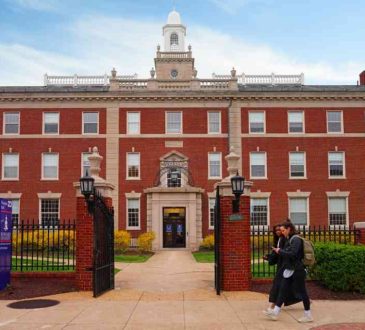Tackling IoT for Smarter Homes, Communities, Businesses [Infographic]

By 2020 around 50 billion devices will be connected to the cloud, and with each other, a study says. This ecosystem makes up the Internet of Things (IoT).
And as we speak, advances in this area have been used to make homes, buildings, businesses, communities, and cities smarter.
For instance, an intelligent home can “learn” more about its inhabitants to enhance their experience. Through cognitive computing, companies can reduce their customer service time and related costs.
As there are many ways we can benefit from the IoT, it is just as important to focus on one aspect that will have the most impact when it breaks down: network security.
Let’s take a look at the state of security in its most visible places of application:
Home security
In 2016, there was a 64% rise in the sales of smart home devices. Currently, there are 90 million smart-home households. Amazon Echo and Google Home integrate with many of these devices to strengthen security.
And there is a need for more of these tools because of increased offline and online risks. The good thing is that, together with proper education of homeowners, solutions to combat the combined threat of hackers and burglars also lie in digital technology.
Tasks and functions as simple as remote monitoring, real-time notifications, and firmware updating are accessible to residents. Locations of emergency, or 911, calls can be better detected through cloud-based telephony.

Check out this infographic by Ooma to familiarize yourself with the facts about the changing home security environment:
Building security
Data analytics and security go hand-in-hand when it comes to overseeing smart buildings. Residential and commercial building owners aim to provide end users, the tenants, with more comfort. And with the IoT, the components of intelligent equipment are feeding more data to decision-makers, allowing them to make enhancements that involve energy savings, carbon dioxide emissions, and maintenance issues, among others. With so much at stake, a strong security system is the first line of defense for owners and tenants from breaches and hacking. Again, it is also imperative to educate occupants. Some solution providers present the information through easy-to-understand visual analysis of individual systems or an entire portfolio of buildings. Further, automation enables more efficient management and promotes sustainability of these structures.
Business security
There is no area that has felt the impact and intensity of the growing importance of the IoT more than the world of business.
The advent of intelligent devices, which can communicate with users and other devices, has brought about behavior identification that firms can tap to reach out to the right audience. Ever heard of chatbots? With many functions and features of daily business operations being done in the cloud, the cost of strengthening security should be part of owners’ and leaders’ conversations.
Businesses are responsible for securing customer property as well as their intellectual property. And precisely because they have the key to these kinds of data, they are vulnerable to cyber attacks. So top-tier network security should go together with the advancement of the IoT in business.
Community and city security
When the wrong hands get access to security features in communities and cities, many lives and systems will get compromised. And even if they use it for their gains, their actions will yield consequences that cannot be undone. Say, a CCTV network can be breached in order for criminals to rob a bank. The example may sound like something that only happens in the movies.
But with hackers becoming more sophisticated these days, we should only work on making communities and cities cyber-secure. At the same time, leaders of towns and communities can partner with innovators to bring more effective and efficient services to the people. The IoT, for instance, can solve problems and issues concerning mass transportation, energy management, and disaster response, among many other examples.
Takeaway
It’s no secret that we are headed toward a future where the Internet of Things is the norm. It is also a source of anticipation, not just anxiety, as a world with devices that can communicate with each other and understand humans bears excellent promise. We make networks and systems more secure because we want these devices to work as we intended them to, for the social good.
Have you read?
Top Non-U.S. Business Schools For Executive MBA In 2018.
Best Universities To Study Architecture And Interior Design In America, 2018.
World’s Best Business Schools With The Most Employable Graduates For 2018.
Bring the best of the CEOWORLD magazine's global journalism to audiences in the United States and around the world. - Add CEOWORLD magazine to your Google News feed.
Follow CEOWORLD magazine headlines on: Google News, LinkedIn, Twitter, and Facebook.
Copyright 2025 The CEOWORLD magazine. All rights reserved. This material (and any extract from it) must not be copied, redistributed or placed on any website, without CEOWORLD magazine' prior written consent. For media queries, please contact: info@ceoworld.biz











